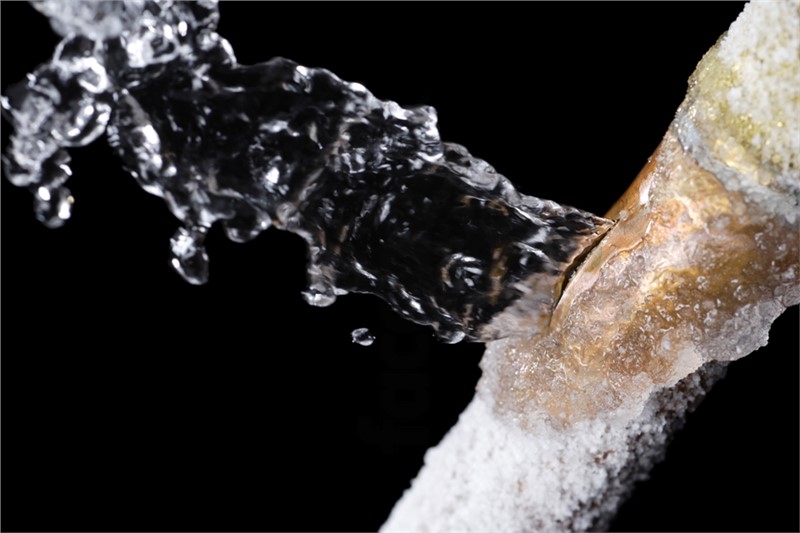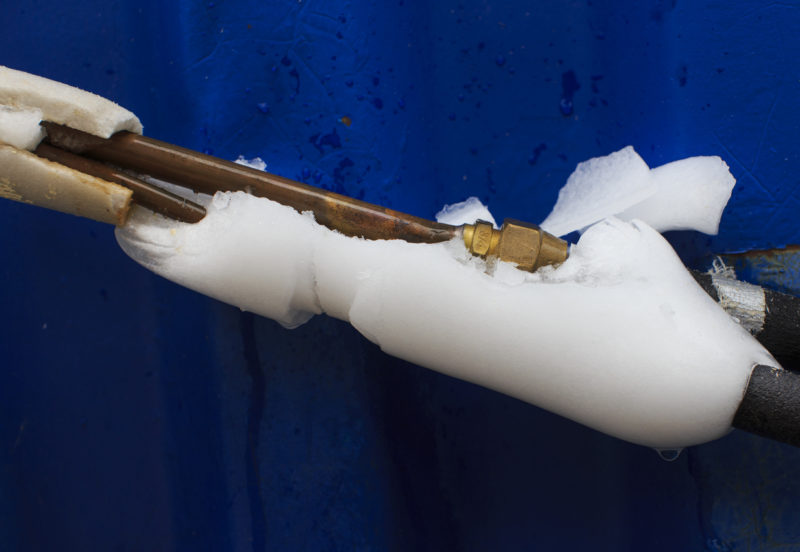How to Handle a Frozen AC Pipe: Expert Advice
How to Handle a Frozen AC Pipe: Expert Advice
Blog Article
This great article following next involving How can I fix an air conditioner’s frozen pipe? is amazingly compelling. Read on and draw your own personal findings.

Intro
Uncovering that your AC pipe is frozen can be concerning, particularly during hot summertime when you rely upon your air conditioner the most. Recognizing what to do in such a situation is critical to prevent additional damage to your air conditioning system and guarantee your comfort inside.
Recognizing the Causes
Numerous variables can contribute to the freezing of an air conditioning pipe. Recognizing these causes can help you attend to the issue properly.
Absence of Airflow
One common root cause of an icy air conditioning pipe is inadequate airflow. When the air flow over the evaporator coil is restricted, it can create the coil to drop below freezing temperature level, resulting in ice formation on the pipeline.
Low Refrigerant Levels
Not enough cooling agent degrees in your AC system can likewise result in a frozen pipe. Reduced refrigerant degrees can trigger the stress in the system to drop, bring about the cold of moisture on the evaporator coil.
Cold Weather Conditions
In cooler environments, freezing temperature levels outside can contribute to the cold of air conditioning pipelines. If your AC unit is not properly insulated or if there are leaks in the ductwork, chilly air can infiltrate the system, triggering the pipeline to ice up.
Dirty Air Filters
Filthy or stopped up air filters can restrict air flow in your air conditioning system, causing different concerns, including an icy pipe. It's essential to change or cleanse your air filterings system frequently to make sure correct air flow and protect against ice accumulation.
Indications of a Frozen A/c Pipe
Acknowledging the indicators of an icy air conditioning pipe is critical for punctual action.
Decreased Airflow
If you discover a significant decline in air flow from your vents, it might indicate an icy pipe.
Ice Buildup on the Pipe
Visible ice build-up on the refrigerant line or the evaporator coil is a clear indicator of an icy air conditioner pipeline.
Weird Sounds from the Unit
Unusual sounds, such as hissing or gurgling, originating from your air conditioning device can indicate that there's ice existing on the pipeline.
Immediate Actions to Take
When confronted with an icy air conditioner pipe, it's essential to act quickly to avoid more damage to your cooling system.
Turning off the a/c
The primary step is to turn off your air conditioning system to avoid the system from running and intensifying the problem.
Looking for Blockages
Examine the location around the interior system for any type of obstructions that may be obstructing air movement, such as furniture or curtains.
Defrosting the Pipe
You can make use of gentle methods like placing towels taken in cozy water around the icy pipe to assist thaw it slowly.
Safety nets
Taking preventive measures can assist avoid future occurrences of an icy air conditioner pipeline.
Routine Maintenance Checks
Arrange regular upkeep get in touch with a specialist HVAC service technician to ensure that your air conditioner system is running effectively.
Changing Air Filters
Routinely change or clean your air filters to stop air movement restrictions and preserve optimal performance.
Shielding Exposed Pipes
If your air conditioning pipelines are exposed to chilly temperature levels, take into consideration insulating them to avoid cold throughout winter months.
Seeking Professional Help
If DIY techniques fall short to fix the concern or if you're unsure about exactly how to proceed, it's finest to seek help from a certified HVAC service technician.
When DIY Methods Fail
If your efforts to thaw the pipe or address other issues are unsuccessful, it's time to hire a specialist.
Value of Hiring a Professional HVAC Technician
A certified HVAC service technician has the knowledge and devices essential to identify and repair problems with your AC system securely and efficiently.
Conclusion
Managing a frozen AC pipeline can be a discouraging experience, but understanding how to react can aid lessen damage and recover comfort to your home. By comprehending the reasons, acknowledging the indicators, and taking prompt action, you can properly deal with the concern and stop future events.
Frozen AC Line: Why It Happens & What To Do About It
A frozen AC line can be a rather peculiar sight in a place like Phoenix, Arizona where nothing ever freezes. In this post, we’ll discuss what makes an air conditioner line frozen – and what you can do about it.
Dirty Air Filters
Did you know that you should be cleaning or replacing your air filters on a monthly basis? Failing to do this can result in airflow issues that, in turn, cause your evaporator coils and lines to freeze over. You’ll notice a buildup of ice on both components, although the buildup on your pipes will, of course, be more evident unless you open your air condition up to reveal the coils.
What To Do About It
Give your air filter a good cleaning if it’s reusable. If not, replace the filter outright. Next, switch your air conditioner’s fan setting on and leave it there for 2-3 hours. This will draw warm air in, helping to thaw your evaporator coil. You can also check out this article for some tips on cleaning the coils themselves if you’d like to speed the process up. Before you switch the unit back to its normal state, make sure the supply vents are completely unobstructed and free of dust or other debris.
If you keep having this issue even after replacing your filters regularly, contact a local HVAC repair company and have them inspect your evaporator coil, ductwork, and any other components that may be at fault. If you live in the Phoenix, Arizona area, give American Home Water and Air a call.
Low Refrigerant Levels/Leakage
What To Do About It
Contrary to what air conditioner “recharge” companies often tell their clients about refrigerant, it should never need to be simply refilled. You see, refrigerant runs in what experts refer to as a “closed loop.” Refrigerant really shouldn’t be leaving that loop. If it is, you’ve got a leak.
Paying someone to come and pump more refrigerant into your system (aka “recharge” it) isn’t the solution. Doing that will simply kick the can down the road. Besides, refrigerant leaks can be harmful to the environment and people in your home.
Rather, you need to take care of the leak with the help of a technician. Check out this article for some more information about dealing with air conditioners that are leaking refrigerant. Before you contact a technician, switch your thermostat to the off position. Then, switch the fan setting on and let it run for 2-3 hours so the unit can thaw.
Improper Temperature Setting
Improper temperature settings can also cause a drop in your air conditioner’s pressure. What many people don’t realize is that air conditioners are actually designed to run when temperatures have fallen above roughly 60 degrees Fahrenheit. If you run the unit when it’s cold outside, you’ll run into many issues, including frozen components.

I found that page about What Causes AC Pipes To Freeze? while exploring the search engines. Sharing is nice. Who knows, you may very well be helping someone out. I am grateful for your time. Come back soon.
Schedule An Appointment Report this page